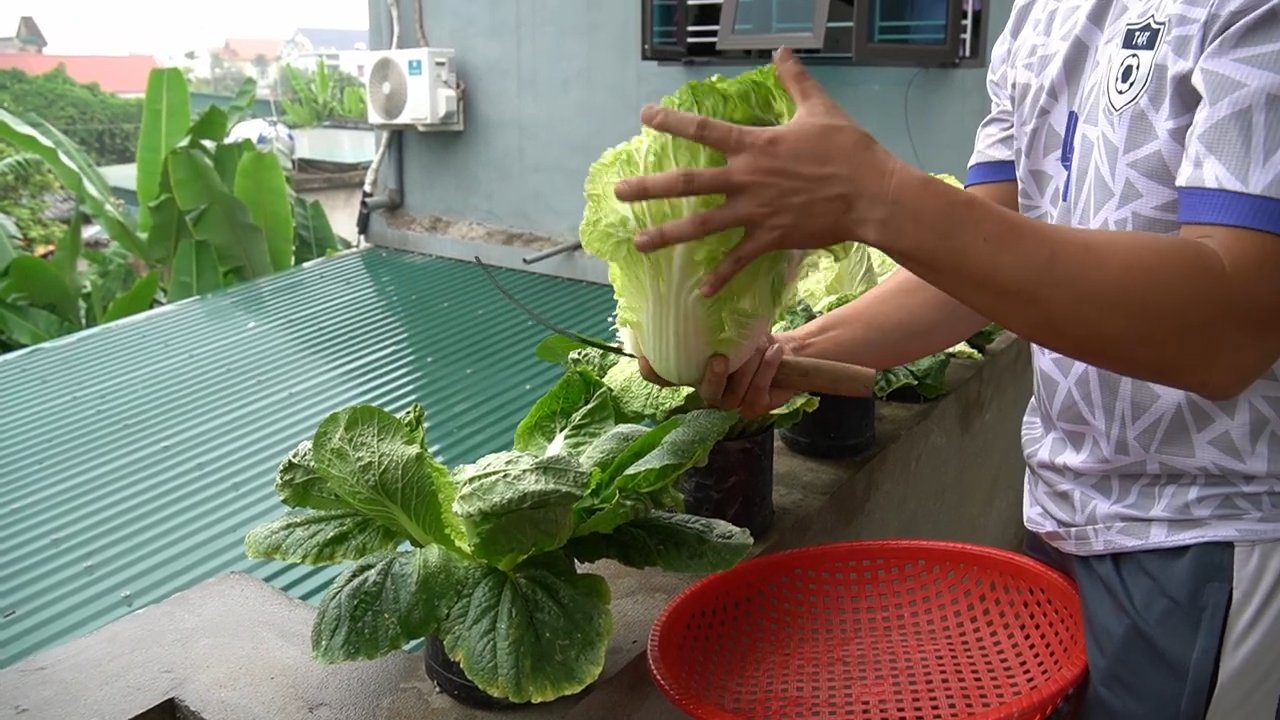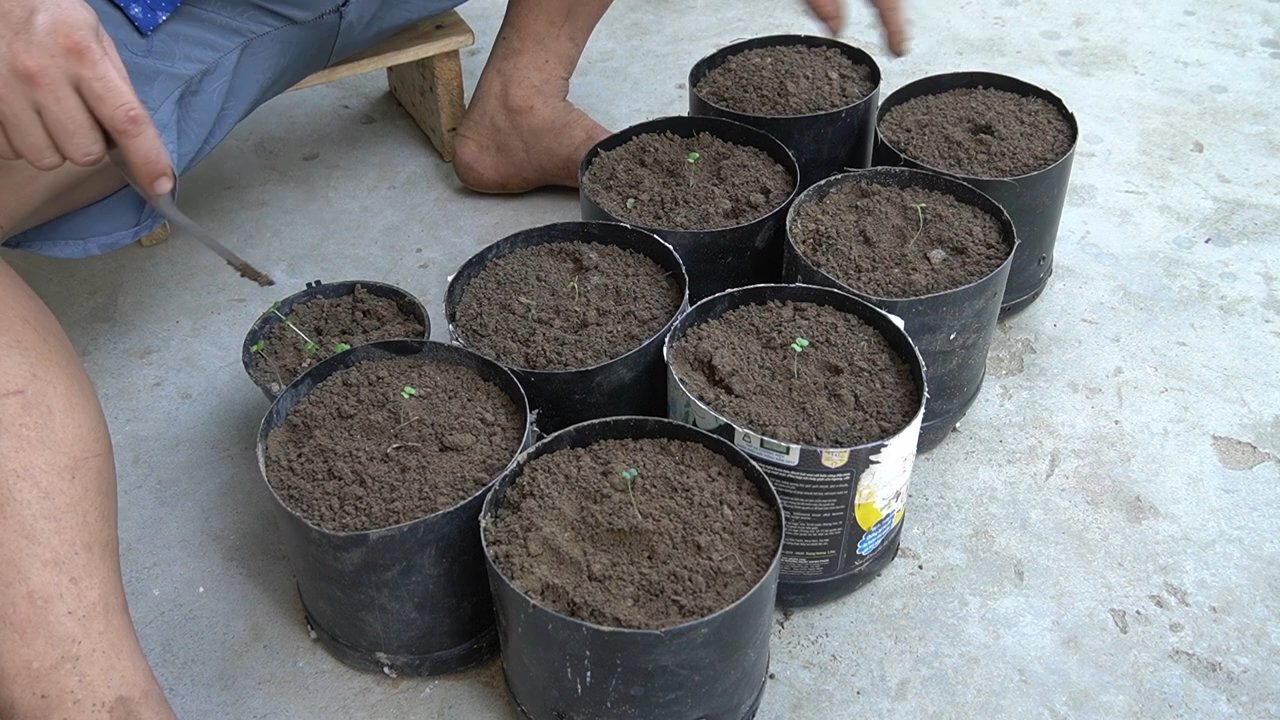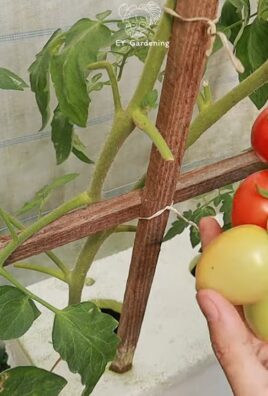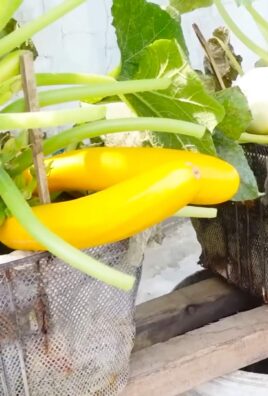DIY balcony garden dreams are more attainable than you think! Imagine stepping onto your balcony and being greeted by a vibrant oasis of colorful blooms, fragrant herbs, and even fresh vegetables. Sounds idyllic, right? Well, it doesn’t have to be just a dream. For centuries, people have cultivated small, personal gardens in limited spaces, from window boxes in bustling cities to rooftop havens in ancient civilizations. This connection to nature, even in the most urban environments, is deeply ingrained in our history.
But let’s be honest, sometimes the thought of starting a garden, especially on a small balcony, can feel overwhelming. Where do you even begin? That’s where this DIY guide comes in! I’m here to share some simple, effective, and budget-friendly tricks and hacks that will transform your balcony into a thriving green space. Whether you’re a seasoned gardener or a complete beginner, these tips will help you maximize your space, choose the right plants, and create a DIY balcony garden that you’ll love spending time in.
In today’s fast-paced world, having a little slice of nature to call your own is more important than ever. It’s a chance to de-stress, reconnect with the earth, and even grow your own food! So, let’s ditch the overwhelm and dive into the wonderful world of balcony gardening. Get ready to unleash your inner gardener and create a beautiful, functional, and personalized outdoor space, one DIY project at a time!

Creating Your Dream Balcony Garden: A DIY Guide
Hey there, fellow plant lovers! Dreaming of a lush, green oasis right outside your door? A balcony garden is totally achievable, even if you’re short on space. I’m going to walk you through creating your own thriving balcony garden, step-by-step. Get ready to transform your outdoor space into a beautiful, relaxing retreat!
Planning Your Balcony Garden
Before you even think about buying plants, a little planning goes a long way. This will save you time, money, and potential heartache later on.
* Assess Your Space: Take a good look at your balcony. How much sunlight does it get? Is it mostly sunny, shady, or a mix? This is crucial for choosing the right plants. Also, consider the size and weight capacity of your balcony. You don’t want to overload it!
* Consider Your Climate: What’s your local climate like? Are you dealing with hot summers, cold winters, or something in between? Choose plants that are well-suited to your region.
* Decide on a Style: Do you envision a vibrant flower garden, a productive vegetable patch, a calming herb garden, or a mix of everything? Having a style in mind will help you narrow down your plant choices and create a cohesive look.
* Think About Maintenance: How much time are you willing to dedicate to your balcony garden? Some plants require more care than others. Be realistic about your availability and choose plants accordingly.
* Sketch a Layout: A simple sketch can help you visualize your garden and plan where to place your pots and plants. Consider the height and spread of each plant to ensure they have enough room to grow.
Choosing the Right Containers
The right containers are essential for a successful balcony garden. They need to be durable, well-draining, and aesthetically pleasing.
* Material Matters:
* Terracotta: Classic and breathable, but can dry out quickly and be heavy.
* Plastic: Lightweight, affordable, and retains moisture well, but can look less attractive.
* Resin: Durable, lightweight, and comes in a variety of styles, but can be more expensive.
* Metal: Stylish and durable, but can heat up quickly in the sun.
* Size is Key: Choose containers that are appropriately sized for the plants you want to grow. Larger plants need larger pots.
* Drainage is Non-Negotiable: Make sure your containers have drainage holes to prevent waterlogging. If they don’t, you can drill some yourself.
* Consider Hanging Baskets and Wall Planters: These are great for maximizing space and adding visual interest.
* Match Your Style: Choose containers that complement your balcony’s overall aesthetic.
Selecting Your Plants
This is the fun part! But remember to choose plants that are suitable for your balcony’s conditions and your gardening experience.
* Sunlight Requirements:
* Full Sun (6+ hours of direct sunlight): Sunflowers, tomatoes, peppers, petunias, zinnias.
* Partial Sun (4-6 hours of direct sunlight): Impatiens, begonias, lettuce, spinach, herbs like basil and parsley.
* Full Shade (Less than 4 hours of direct sunlight): Hostas, ferns, impatiens, coleus.
* Consider Vertical Growth: Vining plants like climbing roses, clematis, and morning glories can add height and privacy to your balcony. Use trellises or supports to guide their growth.
* Choose Compact Varieties: Look for dwarf or compact varieties of vegetables and flowers that are specifically bred for container gardening.
* Mix and Match: Combine different textures, colors, and heights to create a visually appealing garden.
* Don’t Forget Herbs: Herbs like basil, mint, rosemary, and thyme are easy to grow in containers and add fresh flavor to your meals.
* Think About Pollinators: Plant flowers that attract bees, butterflies, and other pollinators to your balcony.
Getting Your Hands Dirty: Planting Time!
Alright, let’s get planting! This is where your vision starts to come to life.
1. Gather Your Supplies: You’ll need your containers, potting soil, plants, gardening gloves, a trowel, and a watering can.
2. Prepare Your Containers: If your containers don’t have drainage holes, drill some. Line the bottom of each container with a layer of gravel or broken pottery to improve drainage.
3. Fill with Potting Soil: Use a high-quality potting mix that is specifically formulated for container gardening. Avoid using garden soil, as it can become compacted and doesn’t drain well. Fill the container about two-thirds full.
4. Remove Plants from Their Pots: Gently squeeze the sides of the pot to loosen the plant. Carefully remove the plant from the pot, being careful not to damage the roots.
5. Loosen the Roots: Gently loosen the roots of the plant with your fingers. This will encourage them to spread out and establish themselves in the new container.
6. Place the Plant in the Container: Position the plant in the center of the container, making sure the top of the root ball is level with the soil surface.
7. Fill with Soil: Fill the remaining space in the container with potting soil, gently pressing down around the plant.
8. Water Thoroughly: Water the plant thoroughly until water drains out of the drainage holes. This will help settle the soil and hydrate the roots.
9. Add Mulch (Optional): Add a layer of mulch, such as wood chips or straw, to the surface of the soil. This will help retain moisture, suppress weeds, and regulate soil temperature.
Maintaining Your Balcony Garden
Once your plants are in place, it’s important to provide them with the care they need to thrive.
* Watering: Water your plants regularly, especially during hot, dry weather. Check the soil moisture by sticking your finger into the soil. If the top inch feels dry, it’s time to water. Water deeply, until water drains out of the drainage holes. Avoid overwatering, as this can lead to root rot.
* Fertilizing: Container plants need regular fertilization, as the nutrients in the potting soil are quickly depleted. Use a balanced liquid fertilizer every 2-4 weeks, following the instructions on the label.
* Pruning: Prune your plants regularly to encourage bushier growth and remove dead or damaged leaves. Pinch back the tips of stems to promote branching.
* Pest Control: Keep an eye out for pests, such as aphids, spider mites, and whiteflies. Treat infestations promptly with insecticidal soap or neem oil.
* Deadheading: Remove spent flowers to encourage more blooms.
* Support: Provide support for vining plants with trellises, stakes, or other structures.
* Sun Protection: If your balcony gets intense afternoon sun, consider providing some shade for your plants, especially during the hottest months.
* Winter Protection: In colder climates, you’ll need to protect your plants from frost and freezing temperatures. Move them indoors, wrap them in burlap, or cover them with blankets.
Adding Personal Touches
Now that you have the basics down, it’s time to add your own personal touches to make your balcony garden truly unique.
* Add Decorative Elements: Incorporate decorative elements such as garden gnomes, wind chimes, fairy lights, and colorful stones.
* Create a Seating Area: Add a comfortable chair or bench where you can relax and enjoy your garden.
* Use Outdoor Rugs: An outdoor rug can add warmth and style to your balcony.
* Hang String Lights: String lights can create a magical ambiance in the evening.
* Add a Water Feature: A small fountain or birdbath can add a soothing element to your garden.
* Incorporate Art: Hang outdoor art or sculptures to add visual interest.
Troubleshooting Common Problems
Even with the best planning and care, you may encounter some problems in your balcony garden. Here are some common issues and how to address them:
* Yellowing Leaves: This can be caused by overwatering, underwatering, nutrient deficiencies, or pests. Check the soil moisture, fertilize your plants, and inspect them for pests.
* Leggy Growth: This is often caused by insufficient sunlight. Move your plants to a sunnier location.
* Lack of Flowers: This can be caused by insufficient sunlight, over-fertilizing with nitrogen, or improper pruning. Make sure your plants are getting enough sunlight, use a balanced fertilizer, and prune them correctly.
* Pest Infestations: Treat infestations promptly with insecticidal soap or neem oil.
* Root Rot: This is caused by overwatering. Make sure your containers have drainage holes and avoid overwatering.
Enjoying Your Balcony

Conclusion
Transforming your outdoor space into a lush, vibrant balcony garden is more attainable than you might think. This DIY approach offers a fantastic opportunity to personalize your environment, connect with nature, and even grow your own food, all within the confines of your apartment or condo. We’ve explored simple yet effective techniques to maximize space, choose the right plants, and create a thriving ecosystem on your balcony.
The beauty of a DIY balcony garden lies in its adaptability. Don’t feel limited by the suggestions we’ve provided. Experiment with different container sizes, plant combinations, and vertical gardening solutions to discover what works best for your specific space and aesthetic preferences. Consider incorporating herbs like basil, mint, and rosemary for a fragrant and functional addition to your garden. Imagine stepping onto your balcony to snip fresh herbs for your dinner – a truly rewarding experience!
For those seeking a splash of color, annual flowers like petunias, geraniums, and impatiens are excellent choices. They offer a continuous bloom throughout the growing season and are relatively easy to care for. If you’re looking for something more permanent, consider dwarf shrubs or perennial flowers that will return year after year. Remember to research the specific needs of each plant to ensure they thrive in your balcony’s microclimate.
Beyond aesthetics, a balcony garden can also contribute to a healthier lifestyle. Studies have shown that spending time in green spaces can reduce stress, improve mood, and even boost creativity. Creating your own little oasis on your balcony provides a convenient and accessible way to reap these benefits. Plus, growing your own fruits and vegetables can encourage healthier eating habits and reduce your reliance on store-bought produce.
Why is this DIY balcony garden a must-try? It’s a cost-effective way to enhance your living space, connect with nature, and improve your overall well-being. It’s a project that can be tailored to your individual needs and preferences, allowing you to create a truly unique and personalized outdoor sanctuary.
We encourage you to embrace the challenge and embark on your own DIY balcony garden journey. Don’t be afraid to experiment, learn from your mistakes, and most importantly, have fun! We’re confident that you’ll be amazed at the transformation you can achieve with a little creativity and effort.
Once you’ve created your own balcony garden, we’d love to hear about your experience! Share your photos, tips, and challenges in the comments section below. Let’s inspire each other to create beautiful and thriving outdoor spaces, one balcony at a time. Your insights could be invaluable to other aspiring balcony gardeners.
Now, let’s address some frequently asked questions to help you get started on your DIY balcony garden adventure.
Frequently Asked Questions (FAQ)
What are the best plants for a balcony garden?
The best plants for your balcony garden depend on several factors, including the amount of sunlight your balcony receives, the climate you live in, and your personal preferences. Generally, plants that thrive in containers and can tolerate some neglect are good choices. Some popular options include:
* **Herbs:** Basil, mint, rosemary, thyme, oregano, chives. These are relatively easy to grow and provide fresh ingredients for your cooking.
* **Vegetables:** Tomatoes (dwarf varieties), peppers, lettuce, spinach, radishes, strawberries. Growing your own vegetables can be incredibly rewarding.
* **Flowers:** Petunias, geraniums, impatiens, pansies, marigolds, lavender. These add color and beauty to your balcony.
* **Succulents:** Sedum, echeveria, aloe vera. These are drought-tolerant and require minimal maintenance.
* **Dwarf Shrubs:** Boxwood, dwarf conifers, azaleas. These provide structure and year-round interest.
Remember to research the specific needs of each plant before you buy it to ensure it will thrive in your balcony’s environment.
How do I choose the right containers for my balcony garden?
Choosing the right containers is crucial for the success of your balcony garden. Consider the following factors:
* **Size:** Choose containers that are large enough to accommodate the root systems of your plants. Larger containers also retain moisture better, which is especially important in hot weather.
* **Material:** Terracotta pots are porous and allow for good drainage, but they can dry out quickly. Plastic pots are lightweight and retain moisture well, but they may not be as aesthetically pleasing. Consider using a combination of materials to suit your needs.
* **Drainage:** Make sure your containers have drainage holes to prevent waterlogging, which can lead to root rot.
* **Weight:** Be mindful of the weight of your containers, especially if you live in an apartment building. Overloading your balcony can be dangerous. Consider using lightweight potting mix and plastic containers to reduce the overall weight.
How do I water my balcony garden?
Watering frequency depends on the type of plants you’re growing, the weather conditions, and the type of containers you’re using. Generally, you should water your plants when the top inch of soil feels dry to the touch. Avoid overwatering, as this can lead to root rot.
Here are some tips for watering your balcony garden:
* **Water deeply:** When you water, water thoroughly until water drains out of the drainage holes.
* **Water in the morning:** This allows the foliage to dry before nightfall, which can help prevent fungal diseases.
* **Use a watering can or hose with a gentle spray nozzle:** Avoid blasting your plants with a strong stream of water, as this can damage the foliage.
* **Consider using a self-watering system:** These systems can help regulate moisture levels and reduce the need for frequent watering.
How do I fertilize my balcony garden?
Balcony gardens, especially those in containers, require regular fertilization to provide the plants with the nutrients they need to thrive. Use a balanced fertilizer that contains nitrogen, phosphorus, and potassium. You can choose a liquid fertilizer or a slow-release granular fertilizer.
Here are some tips for fertilizing your balcony garden:
* **Follow the instructions on the fertilizer label:** Over-fertilizing can damage your plants.
* **Fertilize regularly during the growing season:** Typically, you should fertilize every 2-4 weeks.
* **Consider using organic fertilizers:** These are gentler on the environment and can improve soil health.
* **Adjust the fertilizer based on the needs of your plants:** Some plants, like tomatoes, require more fertilizer than others.
How do I protect my balcony garden from pests and diseases?
Pests and diseases can be a problem in balcony gardens, but there are several things you can do to prevent them:
* **Choose disease-resistant varieties:** When selecting plants, look for varieties that are known to be resistant to common pests and diseases.
* **Provide good air circulation:** Proper air circulation can help prevent fungal diseases.
* **Inspect your plants regularly:** Look for signs of pests or diseases, such as yellowing leaves, spots, or insects.
* **Use organic pest control methods:** If you find pests, try using organic pest control methods, such as insecticidal soap or neem oil.
* **Remove diseased plants promptly:** This will prevent the disease from spreading to other plants.
What if my balcony doesn’t get much sunlight?
Even if your balcony doesn’t get much sunlight, you can still grow a variety of plants. Some plants that tolerate shade include:
* **Impatiens:** These flowers thrive in shady conditions and come in a variety of colors.
* **Begonias:** These are another good choice for shady balconies.
* **Coleus:** These plants have colorful foliage and can tolerate shade.
* **Ferns:** These add a lush, green touch to any balcony.
* **Hostas:** These plants have beautiful foliage and are very shade-tolerant.
You can also supplement natural light with grow lights if needed.
How do I prepare my balcony garden for winter?
Preparing your balcony garden for winter is essential to protect your plants from the cold. Here are some tips:
* **Move tender plants indoors:** Plants that are not hardy in your climate should be moved indoors before the first frost.
* **Insulate containers:** Wrap your containers with burlap or bubble wrap to protect the roots from freezing.
* **Mulch:** Add a layer of mulch around the base of your plants to help insulate the soil.
* **Water less frequently:** During the winter, plants need less water.
* **Protect from wind:** If your balcony is exposed to strong winds, consider using a windbreak to protect your plants.
By following these tips, you can ensure that your balcony garden survives the winter and thrives again in the spring.





Leave a Comment